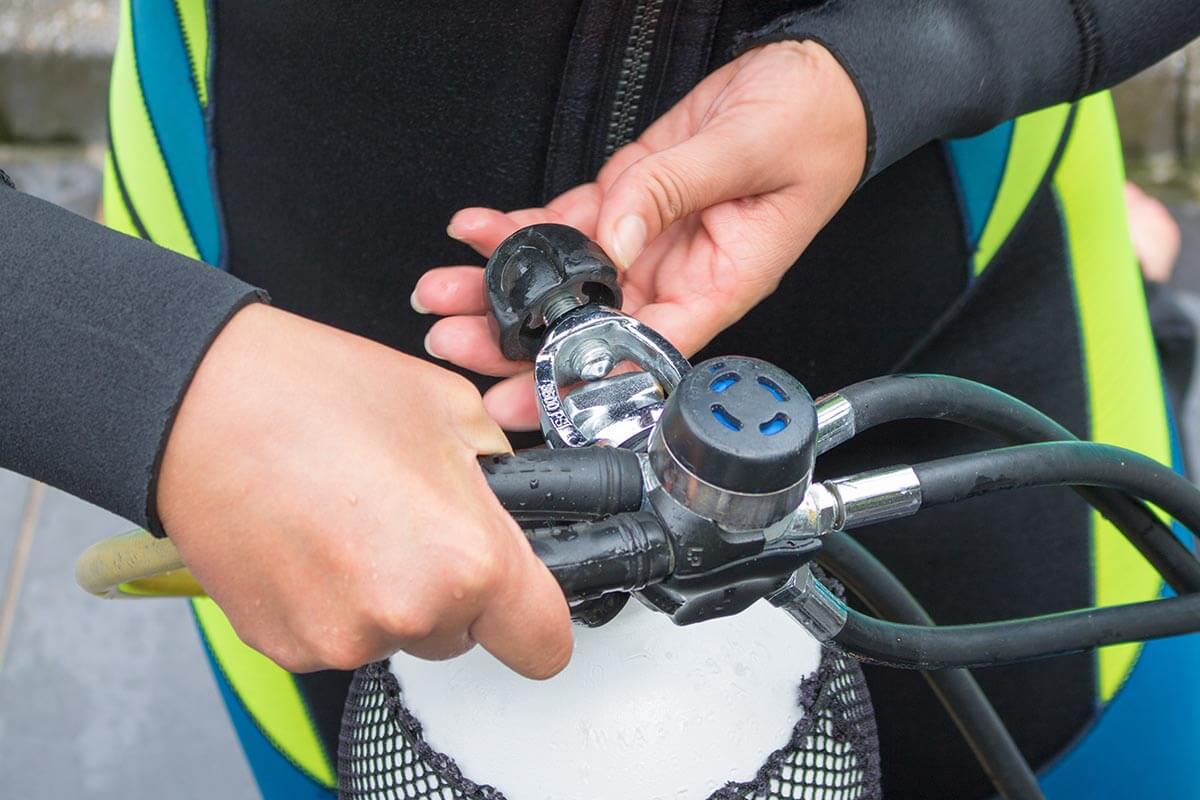
Regulators are the most important piece of gear a scuba diver can buy, and often the most expensive – here’s what you need to look out for before buying your first set
A regulator set will be one of the most expensive investments you make when buying your first scuba diving gear – and prices have risen quite substantially in the last few years. A quick web search (June 2024) turns up a ballpark minimum price of £385/€450 for a first stage, second stage and octopus combo, with another £65/€77 on top for an analogue SPG. At the other end of the range, a high-end, tech- and cold-water diving regulator combo will set you back more than £2,000/€2,350.
The primary concerns when purchasing a regulator is the type of diving you want to do, and where you want to do it. There are no ‘bad’ regulators on today’s market – as long as they are used within the limits of the manufacturer’s specifications (and your own level of training) – but not all regulators are suitable for all environments.
If you’re a purely warm water, recreational diver, then pretty much any regulator will be fine, but if you’re likely to be diving in cold, murky water, or perhaps considering venturing into the realm of deep, technical diving, your choice of regulator becomes much more important.
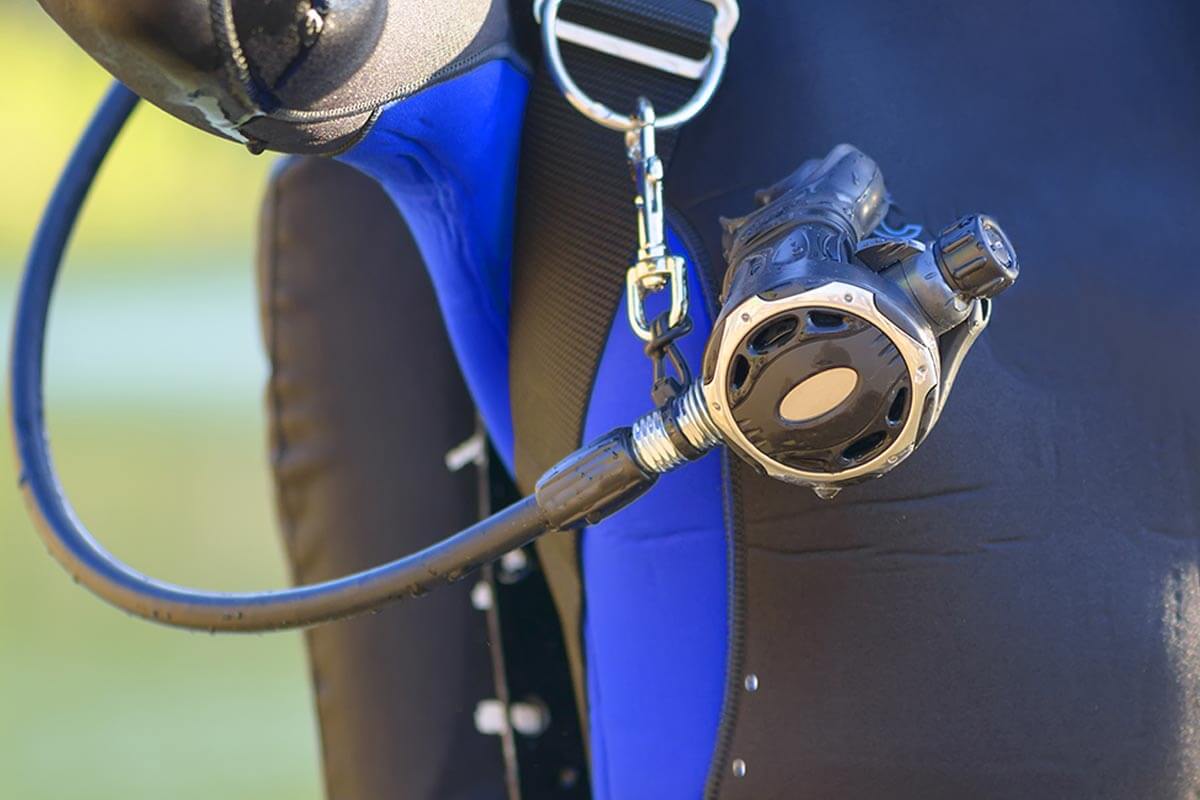
Regulator specifications often make them sound more complicated than they really are, but to help you navigate around the technical jargon, it helps to understand which of these features are relevant and necessary. Purchasing a regulator above your requirements is absolutely fine if you can afford it and may provide greater flexibility later on in your diving life, but there will be knock-on effects in terms of maintenance costs, for what may be no real difference in terms of practical application.
Most regulators are sold as a first- and primary second-stage combination, with the alternate second stage (aka octopus) available as an optional extra. It’s best to buy all three from the same manufacturer – who will recommend a specific model of octopus for your chosen first stage – to remove any doubt that the three components will function together. As always, head to your local dive shop and ask an expert for the best advice.
Need more help? Check out our pick of some of the top regulators on today’s market.
REGULATOR FIRST STAGE
DIN or A-clamp/yoke?
The most obvious difference between first-stage regulators is the tank attachment, of which there are two: the yoke (or A-clamp), which is secured by fitting the regulator over the valve and tightening the screw at the back; or DIN (Deutsche Industrie Norm) regulators, which screw directly into the tank valve itself.
Scuba tanks valves are (broadly speaking) either ‘International’ (INT, for short) with a fixed tank valve opening, or DIN, which have a removable plug in the valve into which the regulator screws. This gives DIN regulators a small disadvantage as they need an adapter to use INT tanks, but many dive shops are replacing out-of-date INT tanks with DIN versions, which are suitable for both DIN and yoke regulators.
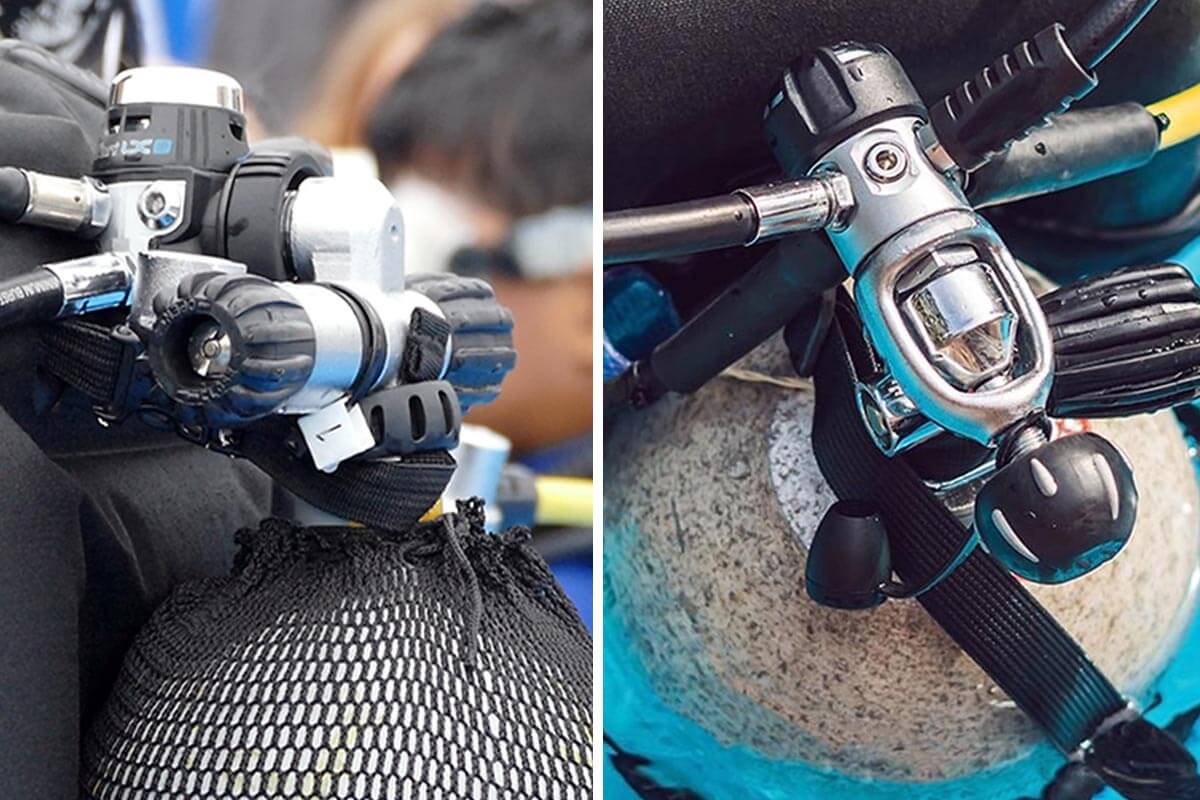
DIN’s advantages, however, outweigh the need for an adapter. DIN creates a much stronger connection between the tank and the regulator and can be used with higher-pressure tank fills; they are less bulky and often lighter in weight; and are less likely to get caught on something when you’re swimming through an overhead environment. DIN regulators also tend to seal better than yokes which helps to reduce the annoying leaks caused by perished o-rings.
Tip for buying: Yoke regulators are absolutely fine for recreational diving and can be used anywhere. DIN is a better system (and essential for tech diving) but not globally available. My recommendation based on personal preference is DIN, with the addition that investing in a DIN-INT converter would be sensible.
Balanced, unbalanced or overbalanced?
Unbalanced: Unbalanced regulators are directly affected by tank pressure, leading to an increase in breathing effort when a diver is running low on air. The increase in resistance is virtually unnoticeable until a diver reaches 30bar/450psi or less, by which time divers following safe recreational diving practices should already be at, or near, the surface. Some people say unbalanced regulators worsen your air consumption, but any difference is negligible – good air consumption is achieved through good buoyancy control, practice and technique, not regulator design.
Balanced: In simple terms, the breathing characteristics of a balanced regulator remain unchanged regardless of the pressure in the tank. These are nowadays the most common and popular form of regulator design and will function well for both recreational and deep technical diving.
Overbalanced: An overbalanced regulator increases the airflow for deeper dives, but any advantage is negligible for all but the deepest and most challenging theatres of diving.
Tip for buying: For recreational diving, which type you buy is more of a choice over budget than design. The least expensive regulators are unbalanced, but have also been the mainstay of recreational rental gear for decades, and will serve the once- or twice-a-year tropical resort diver well. Almost every regulator above entry-level is balanced, and a better long-term investment – with the caveat that service charges will be slightly higher.
Pistons and diaphragms
The piston is the simpler design, in which a hollow metal piston and compensating spring open and close the air supply on demand. Diaphragm regulators are more complex, with a flexible rubbery disk governing the operation of the airflow as a diver inhales.
In general, lower-end, unbalanced regulators will be piston-based; top-end overbalanced regulators diaphragm-based; and balanced regulators being either/or. For recreational diving, there isn’t a great deal of difference in terms of their practical application, with the possible exception of cold water diving (see below).
Tip for buying: There is no real difference in performance between piston and diaphragm regulators, although diaphragm regulators have more components and are therefore usually more expensive to service.
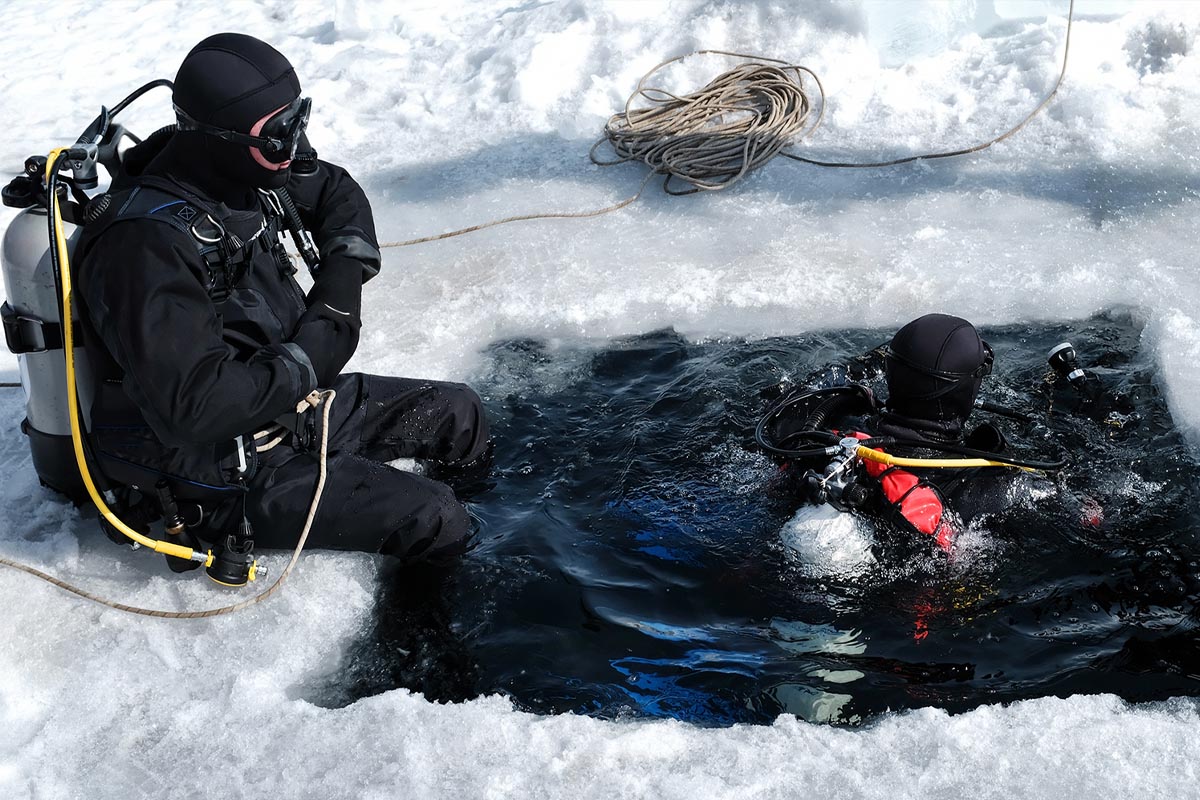
Cold-water insulation and environmental seals
Diving in water temperatures around 5°C or less requires a regulator that can cope with the combination of the cold water and the cooling properties of expanding gas, which can cause the internal workings of a regulator to freeze open, resulting in an uncontrollable freeflow. Similarly, diving in murky water means silt, sand and other particulate matter could foul the internal workings of a regulator unless it is sealed against the environment.
Diaphragm regulators are by default environmentally sealed, and many – but not all – are suitable for cold-water diving. Environmentally sealed, insulated piston regulators are also available. The choice is less about the regulator’s inner workings and more about the features it has to protect against cold and silt.
Tip for buying: Regulator manufacturers explicitly state whether or not a particular model is suitable for cold-water diving, so make sure you check. Your local dive shop expert will be able to assist.
Regulator ports
All current regulators have at least one high-pressure (HP) port for use with a submersible pressure gauge (SPG), air-integrated computer or wireless air-integration transceiver; and four low-pressure (LP) ports – two for the breathing regulators, one for the BCD inflator mechanism, and one for a drysuit inflator, if needed.
Note that some manufacturers have taken to giving their LP ports more technical-sounding names such as ‘High Flow Ports’. They’re still LP ports, just designed to be as efficient as possible.
Higher spec regulators usually have two HP and up to six LP ports, mostly intended to provide extra support and redundancy for technical diving. Divers using the increasingly popular wireless air-integrated computers may wish to consider purchasing a regulator with two HP ports to facilitate the connection of a backup, analogue SPG.
Tip for buying: You can’t have fewer than four LP ports, but two HP ports are definitely recommended for technological future-proofing.
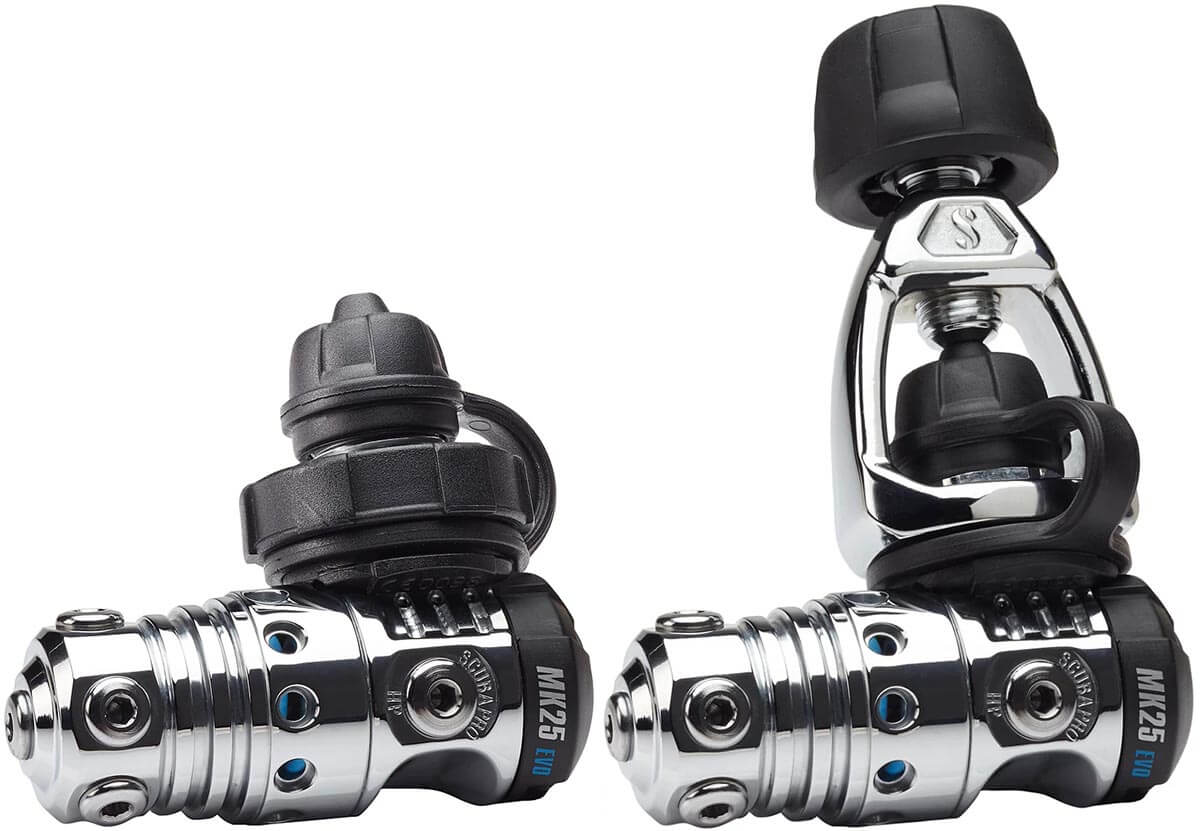
Regulators for use with enriched air Nitrox
All regulators can be used for diving with a maximum of 40% oxygen in the gas mixture, which covers all forms of recreational ‘enriched air’ nitrox, plus lower percentage technical mixtures.
It is worth mentioning that International standards require regulators used with gas mixtures containing more than 40% O2 to be ‘oxygen-clean’ and use oxygen-compatible components and lubricants. Within the EU (and UK), they are also required to be colour-coded green and have a different-sized (M26) fitting. Manufacturers make regulators specifically designed for this purpose.
High O2 mixtures are used for decompression during technical diving and are kept in separate tanks for use at the appropriate time, not as the primary breathing gas during the dive. O2 regulators are additional requirements for the extra tanks and these high-percentage mixtures have no bearing on the choice of ‘main’ regulator.
So which regulator should I buy, again?
For warm water tropical recreational diving, it really doesn’t matter. If you have the funds, however, a balanced first-stage DIN regulator with 2 HP ports would be the top choice. Add cold-water compatibility if that’s your thing.
REGULATOR SECOND STAGE
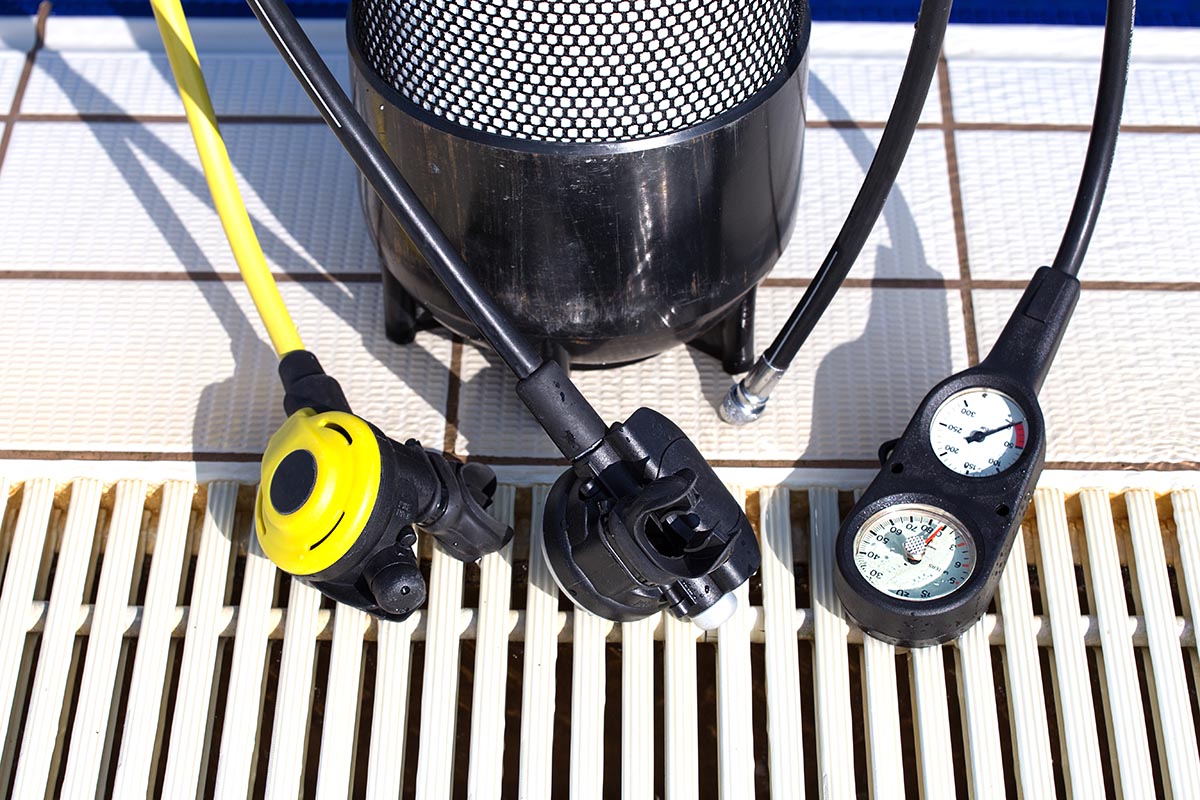
Second-stage regulators have just as much jargon thrown in as first stages, but in practical terms, there is less of a choice to be had when buying one. The manufacturers sell compatible combinations, which often means if you want more features in your second stage, you’ll need to up your budget for the first stage.
Balanced/unbalanced: As with first stages, unbalanced second stages depend on the pressure in the system for operation, whereas balanced second stages do not. Balanced is better, but apart from a slightly increased cost for servicing, the difference is barely noticeable within safe diving limits.
Venturi assist: Many second stages have a switch or lever, often labelled Dive/Pre-dive, or simply +/-, which is often mistaken as an ‘increase or decrease airflow’ switch. This is not the case – the Venturi switch changes the airflow inside the regulator to prevent unnecessary free-flows before the dive when you hit the purge button to clear the regulator. Closing the venturi switch will prevent this from happening.
Adjustable airflow/cracking pressure: Some higher-end second-stage regulators do have a control to adjust the airflow – or, technically, alter the pressure at which you need to inhale to start the air flowing. They can be useful if you regularly dive in deeper water – but are by no means essential – and a badly adjusted cracking pressure knob can be uncomfortable and, potentially, make it hard to breathe.
Cold water use: Cold water problems are more of an issue for first stages, but some second stages have metal internal components and have heat sinks where the hose connects to the regulator to prevent the second stage freezing open. It is best to make sure all your regulator’s components are cold-water compatible, if that’s where you will be diving.
Alternate second stage / Octopus: The manufacturer of the regulator first and primary second stage will have a recommended model for the accompanying alternate air source, aka octopus. Buy that one.
Tip for buying: As mentioned in the introduction – most regulators on the market comprise a first stage and a primary second stage with the alternate second stage (octopus) sold separately. It is possible to ‘mix and match’, but the best and safest bet is to choose the manufacturer’s recommended combo.

AIR INTEGRATION AND SPGs
There are three forms of measuring tank pressure: the traditional analogue SPG which connects directly to the first stage of the regulator; an air-integrated computer which connects directly to the first stage via a hose, or a wireless air-integrated computer which remotely measures tank pressure from a transmitter connected to the first stage.
All three can be used with any first stage regulator and the choice is mostly going to boil down to price, but if you buy a set of regulators then you need at least one of the options below.
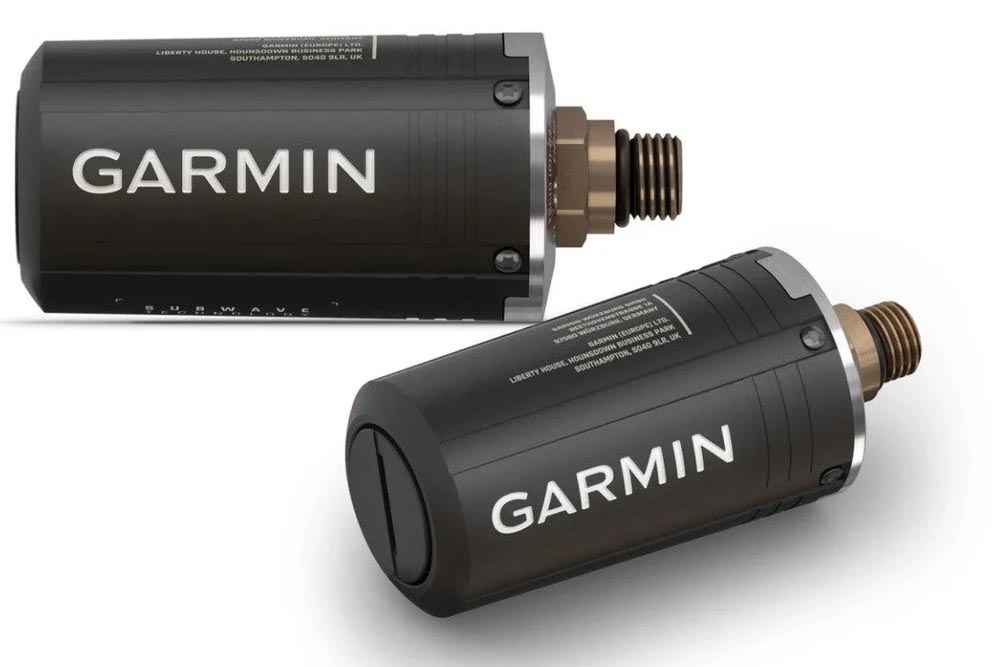
Wireless air-integration: Wireless AI is increasingly popular, and it has certain advantages in that modern systems enable the monitoring of multiple tanks – both your own if you are carrying extra tanks for tech or sidemount diving, but also those of your buddies. Great for technical divers and group diving, but they are expensive options.
Hosed air-integration: The first air-integrated computers connected directly to the tank in the same manner as an SPG, with the computer housed in a console at the end. Their popularity has waned over the last decade but there are still plenty of divers who prefer diving with consoles over wrist-mounted computers. They are less expensive than wireless air-integrated options, but will of course only monitor your own tank pressure.
Submersible pressure gauge: Analogue SPGs have been the mainstay of diving for more than 60 years. They are inexpensive, durable and reliable and – very importantly – don’t need batteries, which in many dive computers are not user-changeable. SPGs are available starting at around £65/€77 and are essential kit, either for general or as redundancy/backup for divers using air-integrated computers.

LAST BUT NOT LEAST:
Depth gauges: Most recreational divers nowadays opt to buy or rent a dive computer, and having a backup analogue depth gauge in case of computer failure is – depending on where you’re diving – not quite as essential as a backup SPG. Computers are definitely the recommended option and relatively inexpensive models are available, but if you don’t own a computer and you’re not planning on buying one, then an analogue depth gauge as part of a combination SPG/depth gauge console is essential, which is why it’s mentioned here.
Low-pressure inflator hose: the low-pressure inflator (LPI) hoses which connect BCDs to the first stage regulator are usually sold with BCDs, not the regulators. If you don’t own a BCD yet, make sure you buy an inflator hose with your regulators.
Rubber/braided hoses: the standard hoses connecting first-stage to second-stage regulators are rubber, which is fine, but braided steel hoses are better, more flexible and more durable in every way. Some manufacturers are starting to fit them as standard, but if your choice of regulator does not, and you have a bit extra to splurge on braided steel hoses, get your dive shop to fit them as part of your purchase.
BUYING YOUR FIRST REGULATOR
As with all dive gear, the Internet is full of discussion about the many different regulators and the merits of their particular features. The most important factors in deciding which set of scuba diving regulators to buy, however, are the type of diving you’re going to be doing, and where you’re going to be doing it.
For easy, recreational warm-water, resort-based holiday diving, even the cheapest regulators available will be sufficient, but if you’re going to be diving in cold water, or think you might want to head into the realms of technical diving, a mid- to high-end regulator becomes an essential choice.
Beyond that, buy to your means. A top-end regulator is going to work everywhere and last for many years, but if you’re on a budget, then a little bit of technical knowledge may help save some money by avoiding unnecessary complexity.
Finally – buy your first set of regulators from your local dive shop (or one of the online professional scuba stores) rather than going for cheap deals on the Internet. Not all dive shops sell all brands, so if you buy online and your local dive shop can’t support it, then you may be faced with large bills for servicing, and you can’t replace professional, hands-on, expert guidance when parting with your hard-earned money.
More from DIVE’s equipment buying guides:
- Buying your first dive equipment – the basics
- Buying your first dive equipment – masks and snorkels
- Buying your first dive equipment – fins
- Buying your first dive equipment – wetsuits
- Buying your first dive equipment – BCDs
- Garmin Descent S1 communications buoy review - 15 December 2025
- Northern Diver raises the bar with its Odyssey Full Face Mask - 15 December 2025
- Diver bitten while freeing entangled shark off Hawaii Island - 12 December 2025


